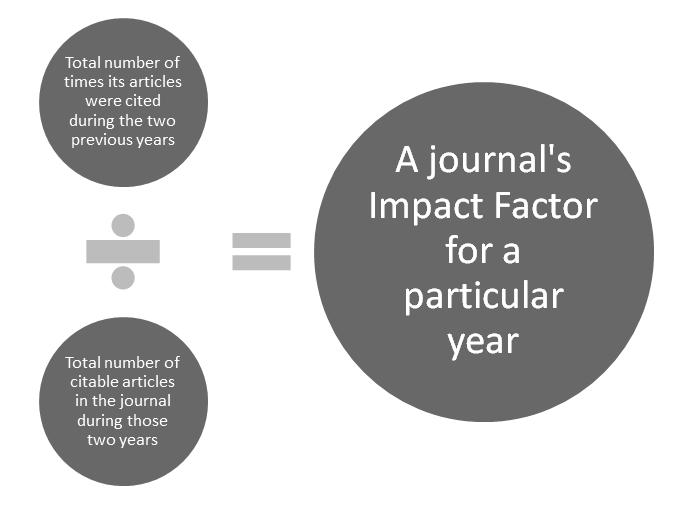The impact factor (IF) or journal impact factor (JIF) of an academic journal is a sciento-metric index calculated that reflects the yearly mean number of citations of articles published in the last two years in a given journal. It is calculated as:
IFᵧ = Citationsᵧ/[Publicationsᵧ₋₁ + Publicationsᵧ₋₂]
For example, in 2017, there were 74090 citations of 2015 and 2016 Nature articles and there were 880 publications in 2016 and 902 publications in 2015. So, the impact factor would be: IF₂₀₁₇ = 74090/[880+902] = 41.577
This means that, on average, its papers published in 2015 and 2016 received roughly 42 citations each in 2017. This impact factor is reported the next year, i.e. 2018.
Impact factor is often correlated with the quality of the journal and the research articles published in it. However, impact factors cannot be used to compare journals across disciplines.
In 2019, NEJM had the highest impact factor of 74.699 amongst all the medical journals. However, the highest ranking journal in surgical specialty was only 10.13 (Annals of Surgery) and much lower in that of other subspecialty like Orthopedics i.e. 5.81 (American Journal of Sports Medicine). Does this mean that these surgical allied journals are suboptimal? Will the scientific value of surgery related research published on an unrelated medicine allied journal be more? The answer is no. The number of publications in the field of surgery is much smaller compared to the fields of pharmacology or internal medicine, which necessarily entails a lower number of citations.
Seyed A. Javadi published the concept of modified impact factor based on the specialty using the equation:
Modified IF = (IF / IF of highest-ranking journal in the field) X100
He further subdivided journal specialty using color coding system.
Example: In 2019 –
Red (Medical and Allied) Highest Modified Impact factor (RHMIF) of 100 is assigned for NEJM (IF 74.699)
Yellow (Surgery and Medicine) Highest Modified Impact factor (YHMIF) of 100 is assigned for Annals of Surgery (IF 10.13).
Green (Orthopedics) Highest Modified Impact factor (GMHIF) of 100 is assigned for American Journal of Sports Medicine (IF 5.81).
The impact factor of Journal of Orthopedic Trauma (JOT) was 1.897. So, we will calculate the modified IF of JOT:
- Red MIF (RMIF) = 1.897/74.699*100 = 2.54
- Yellow MIF (YMIF) = 1.897/10.13*100 = 18.73
- Green MIF (GMIF) = 1.897/5.81*100 = 32.65
In my opinion, this Modified Impact Factor (MIF) is more reflective of the journal’s value and performance than the traditional Impact Factor.
Further reading and references:
- https://www.sciencedirect.com/science/article/pii/S1877042812054419
- https://en.wikipedia.org/wiki/Impact_factor

He is the section editor of Orthopedics in Epomedicine. He searches for and share simpler ways to make complicated medical topics simple. He also loves writing poetry, listening and playing music. He is currently pursuing Fellowship in Hip, Pelvi-acetabulum and Arthroplasty at B&B Hospital.



